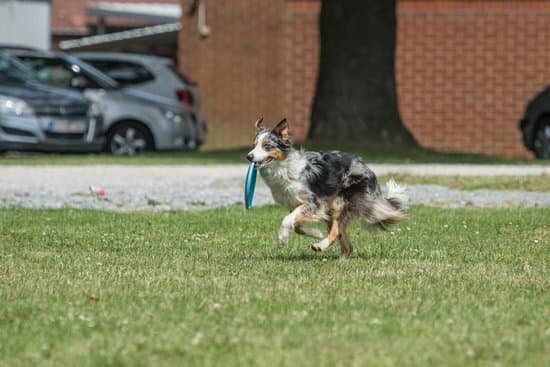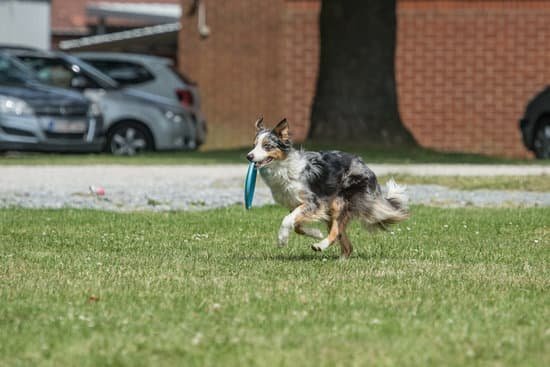Training dog siblings to be separate can be a challenging task for many pet owners. It requires patience, consistency, and understanding of the potential issues that may arise when trying to establish individuality among closely bonded dogs. In this article, we will explore the various methods and strategies for successfully training dog siblings to be separate, ultimately promoting their well-being and harmonious coexistence.
When dog siblings are not trained to be separate, it can lead to a host of behavioral issues such as aggression, resource guarding, and anxiety. Identifying these potential issues early on is crucial in preventing any negative impact on the dogs’ quality of life and the overall harmony within the household. By recognizing these challenges, pet owners can take proactive steps to ensure a smooth transition towards independence for each dog sibling.
From creating individual feeding and water areas to implementing separate training sessions and structured playtime, there are several effective techniques that can help promote independence and individuality among dog siblings. With the right approach, consistency, and professional guidance if needed, pet owners can successfully train their dog siblings to be separate while nurturing a healthy bond between them.
Identifying the Potential Issues of Lack of Separation Between Dog Siblings
Training dog siblings to be separate can be a challenging task, but it is important for their well-being and the harmony within the household. Failure to establish separation between dog siblings may lead to various issues that can affect their behavior and overall health. Identifying these potential issues is crucial in understanding the importance of training them to be separate.
Some potential issues that may arise from lack of separation between dog siblings include:
– **Codependency:** When dog siblings are constantly together, they can develop a strong reliance on each other, which may lead to anxiety or distress when they are separated.
– **Aggression:** Without clear boundaries and space, dog siblings might become territorial and exhibit aggressive behavior towards each other or other pets in the household.
– **Resource guarding:** Sharing resources such as food, water, and toys without clear boundaries can lead to resource guarding behavior, causing tension between the dog siblings.
Recognizing these potential issues underscores the need for implementing strategies to train dog siblings to be separate. By establishing clear boundaries and individual spaces for each dog sibling, these issues can be minimized, promoting their overall well-being and harmonious coexistence within the household.
Establishing Separate Feeding and Water Areas for Dog Siblings
When training dog siblings to be separate, it is crucial to establish separate feeding and water areas for each of them. This helps prevent any potential issues that may arise from competition or aggression during meal times.
It is natural for dogs to be protective of their food, especially when they are competing with a sibling. By providing each dog sibling with their own designated feeding area, you can minimize the likelihood of food guarding behavior and create a more peaceful mealtime environment.
In addition to separate feeding areas, it is important to also provide individual water dishes for each dog sibling. This ensures that each dog has access to fresh water at all times without having to compete with their sibling. Moreover, by creating this separation during meal and water times, you can help foster independence in each dog sibling and reinforce the notion that they do not need to rely on their sibling for resources.
Furthermore, establishing separate feeding and water areas also allows you as an owner to monitor the eating and drinking habits of each dog more effectively. It enables you to keep track of their intake and address any potential health issues such as changes in appetite or excessive thirst. Overall, by implementing this simple yet crucial aspect of training, you can promote harmony between dog siblings and encourage healthy eating habits.
| Separate Feeding Area | Individual Water Dishes |
|---|---|
| Minimizes competition during mealtimes | Allows for independent access to fresh water |
| Promotes peaceful mealtime environment | Fosters independence in each dog sibling |
| Effective monitoring of eating habits | Enables addressing potential health issues promptly |
Creating Individual Spaces and Beds for Each Dog Sibling
Understanding the Importance of Individual Spaces
When training dog siblings to be separate, it is crucial to provide them with individual spaces where they can retreat to and have their own personal belongings. This allows each dog sibling to have a sense of ownership and security, reducing potential conflicts that may arise from sharing common spaces.
Designating Separate Sleeping Areas
It’s essential to designate separate sleeping areas for each dog sibling. Whether it’s separate crates or beds in different parts of the house, having their own sleeping space helps establish boundaries and reduces any tensions that may arise from sharing close quarters.
Personalized Comfort and Belongings
To further reinforce the concept of individual spaces, providing personalized comfort and belongings for each dog sibling is beneficial. This can include separate toys, blankets, and accessories that belong solely to each dog. Having their own items helps build a sense of identity and independence for each dog sibling.
By creating individual spaces and beds for each dog sibling, pet owners can effectively promote independence and reduce potential conflicts between the siblings. It is an essential step in the training process to ensure a harmonious coexistence between the dogs while also promoting their well-being.
Implementing Separate Training Sessions for Each Dog Sibling
Understanding the Importance of Individual Attention
When training dog siblings to be separate, one crucial aspect to consider is the need for individual attention during training sessions. Dogs, like humans, have unique personalities, learning styles, and behaviors. Therefore, it is essential to provide focused training sessions tailored to each dog sibling‘s needs. By doing so, you can address specific behavioral issues, reinforce positive habits, and build a strong bond with each dog individually.
Creating a Training Schedule
To effectively train dog siblings separately, it is advisable to establish a designated training schedule for each dog. This schedule should include specific time slots dedicated to training sessions for each dog sibling. By having a structured routine in place, you can ensure that both dogs receive equal opportunities for learning and development. Additionally, a consistent training schedule can help in managing behavioral issues and preventing conflicts between the siblings.
Utilizing Distinct Training Environments
Another helpful strategy when implementing separate training sessions for dog siblings is to utilize distinct training environments. This means conducting training sessions in separate locations or areas within your home or outdoors. By doing so, you can minimize distractions and create a focused learning environment for each dog. It also provides an opportunity to tailor the training activities based on the individual needs and progress of each dog sibling.
By incorporating these strategies into your approach towards training dog siblings separately, you can promote their overall well-being and behavior while strengthening the bond with each individual pet. It is important to remember that patience, consistency, and positive reinforcement are key elements in this process. With dedication and proper guidance, you can celebrate successful separation of dog siblings and witness their growth as independent and well-behaved pets.
Addressing Potential Behavioral Issues With Professional Help
When it comes to training dog siblings to be separate, some behavioral issues may arise that require professional guidance. Here are some potential behavioral issues that may need to be addressed with the help of a professional:
- Aggression towards each other or towards other pets
- Separation anxiety when apart from each other
- Resource guarding of food, toys, or attention
- Difficulty in house training or obedience training
Addressing these behavioral issues with professional help is essential in ensuring the well-being of both dog siblings and maintaining a harmonious living environment.
Professional help may come in the form of dog trainers, behaviorists, or veterinarians who specialize in canine behavior. They can provide tailored solutions and strategies to address specific behavioral issues and facilitate the successful separation of dog siblings. Additionally, they can also offer guidance on how to create a structured and positive environment for each dog sibling individually.
It’s important for dog owners to recognize when a behavioral issue requires professional intervention and not hesitate to seek help in order to achieve a healthy and happy relationship between their dog siblings.
Introducing Structured Playtime and Activities for Each Dog Sibling
One key aspect of training dog siblings to be separate is to introduce structured playtime and activities for each dog sibling. This is important in order to allow each dog to have individual time for exercise, mental stimulation, and bonding with their human family members.
By setting up specific playtime schedules for each dog sibling, you can ensure that they are getting the attention and engagement they need. This can include activities such as fetch, tug-of-war, or puzzle toys that are tailored to the needs and preferences of each individual dog. Structured playtime not only helps in preventing conflicts between siblings but also promotes their physical and mental well-being.
Additionally, providing activities such as obedience training, nose work, or agility exercises can help in building a strong bond between each dog sibling and their owner. Furthermore, it allows the dogs to develop their skills and confidence individually, which is essential for their overall development.
It’s also important to remember that while structured playtime is essential, it’s equally vital to supervise the interactions between dog siblings during group playtime. This ensures a safe environment for all dogs involved and prevents any potential conflicts from arising during these activities.
| Playtime Activities | Description |
|---|---|
| Fetch | A game where each dog takes turns fetching a toy or object thrown by the owner. |
| Nose Work | An activity where dogs use their sense of smell to locate hidden objects or treats. |
| Agility Exercises | Physical challenges such as jumping through hoops or weaving through poles. |
Maintaining Consistency and Patience in the Training Process
In training dog siblings to be separate, maintaining consistency and patience is key to a successful outcome. Dogs are creatures of habit, so it’s important to establish a routine and stick to it. Consistency in the training process means enforcing the same rules and boundaries every day, which will help the dog siblings understand what is expected of them. Patience is also crucial as changing behavior takes time and effort.
Consistency can be achieved by ensuring that each dog sibling has their own feeding and water area, individual spaces, beds, and separate training sessions. This will help them understand that they need to rely on themselves rather than their sibling for everything. By reinforcing these boundaries consistently, the dog siblings will start to understand that they are separate individuals with separate needs.
Patience is equally important as it may take time for the dog siblings to adapt to the new routine and individual spaces. It’s crucial not to rush or force the separation but rather allow them time to adjust at their own pace.
This may mean letting go of expectations of immediate results and being understanding of any setbacks along the way. With consistency and patience, the training process will eventually lead to successful separation of dog siblings and ultimately contribute to their well-being.
Conclusion
In conclusion, training dog siblings to be separate can be a challenging but ultimately rewarding experience. By identifying the potential issues of lack of separation and taking proactive steps to establish separate feeding and water areas, individual spaces and beds, and implementing separate training sessions, you can set your dog siblings up for success. Additionally, addressing any potential behavioral issues with professional help and introducing structured playtime and activities for each dog sibling will further contribute to their well-being.
By maintaining consistency and patience throughout the training process, you can celebrate the successful separation of dog siblings. Not only will this benefit their individual well-being, but it will also contribute to a more harmonious household dynamic.
Each dog sibling will have the opportunity to thrive in their own space, receive personalized attention during training sessions, and engage in activities tailored to their needs. As a result, you’ll likely see a reduction in conflicts between the siblings and an overall improvement in their behavior.
Ultimately, training dog siblings to be separate is an investment in their happiness and quality of life. With dedication and effort on your part, along with the guidance of professional trainers if needed, you can create an environment where each dog sibling can thrive independently. The benefits of successful separation are numerous and long-lasting, making the training process well worth the effort.

Welcome to the blog! I am a professional dog trainer and have been working with dogs for many years. In this blog, I will be discussing various topics related to dog training, including tips, tricks, and advice. I hope you find this information helpful and informative. Thanks for reading!





